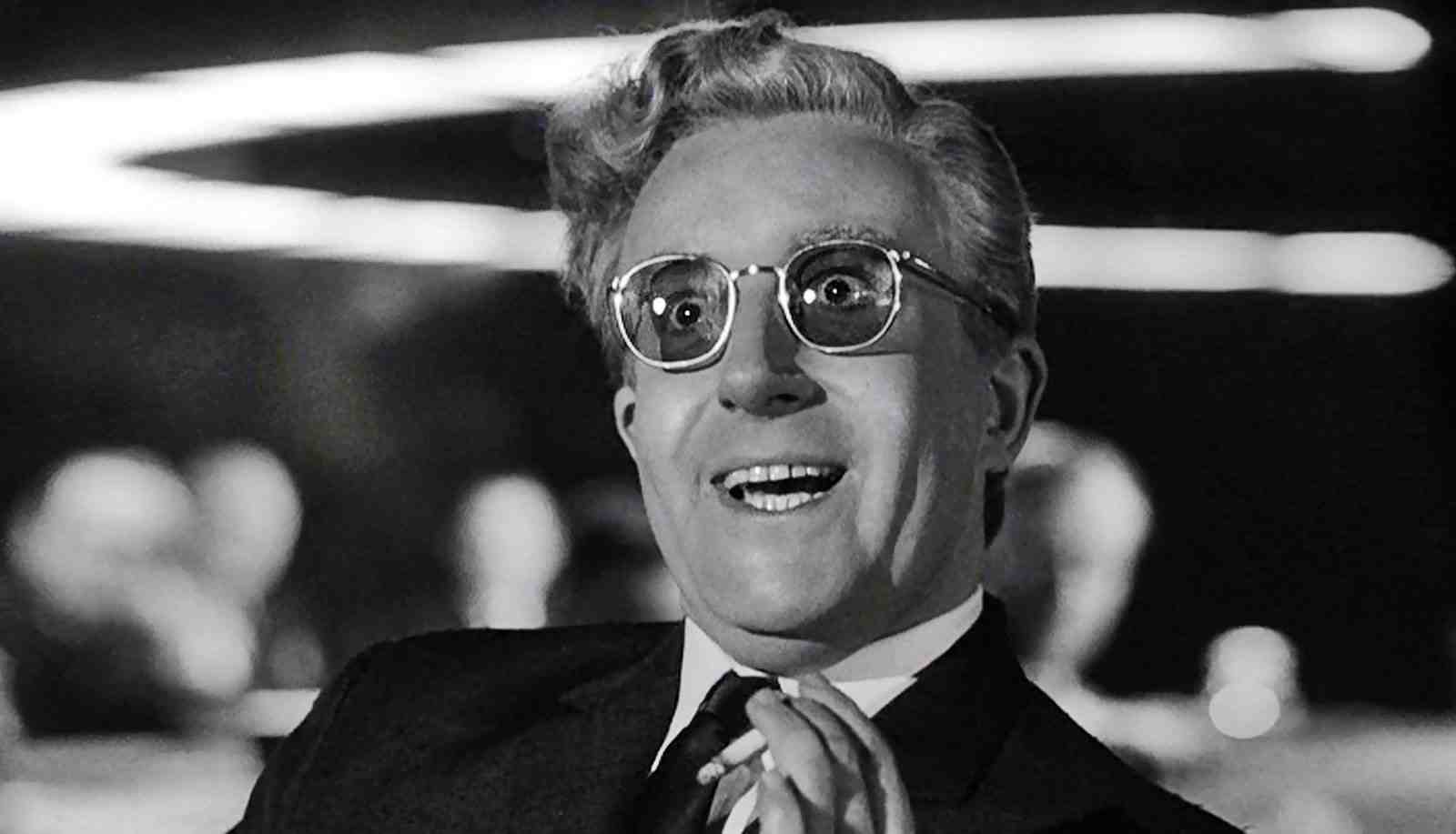
After the Second World War came to a brutal end, the resulting damage from the global conflict left Europe in shambles and the world became divided into a dangerous East vs. West ideology. This newfound chaos meant both sides were always on the brink of starting the next world war at any moment, and the emergence of the superpower became a new reality.
These two nations – the United States and the Soviet Union – became the most powerful countries on the planet simply because they both possessed a huge arsenal of nuclear weapons and for the first time in modern history, man had the power to destroy all of humanity. The concept of mutually-assured destruction became a strategic game that both superpowers engaged in but wisely always played the game to a draw, and this stalemate maintained an uneasy peace between the two nuclear-armed countries.
Director Stanley Kubrick wanted to capture the harsh and dangerous consequences of mutually-assured destruction with his next film after the release of “Lolita”. After finding the source material in the novel “Red Alert” written by Peter George, Kubrick set out to make a straightforward thriller, but something strange happened during the screenwriting process.
The more research the director did about the military protocol relating to a nuclear confrontation between America and Russia, the more the whole thing seemed to be so funny to the filmmaker.
Kubrick had this to say about finding humor in the concept of nuclear annihilation: “My idea of doing it as a nightmare comedy came in the early weeks of working on the screenplay. I found that in trying to put meat on the bones and to imagine the scenes fully, one had to keep leaving out of it things which were either absurd or paradoxical, in order to keep it from being funny; and these things seemed to be close to the heart of the scenes in question.”
Kubrick quickly switched gears and gave up on making an intense drama, instead choosing to make a dark comedy and when “Dr. Strangelove or: How I Learned to Stop Worrying and Love the Bomb” was released in 1964, it was celebrated by critics and became a huge commercial hit at the box office, and decades later the film is still regarded as one of the greatest comedies of all time. Kubrick’s bold satirization of the Cold War mentality was a stunning indictment of the military industrial complex.
The film can also serve as a cautionary warning about today’s political climate because in 2017, a full generation removed from the Cold War, tensions are building up between both superpowers once again with accusations of Russia interfering with the US elections, and with both American and Russian troops on the ground in Syria, a powder keg scenario which could easily escalate into conflict between the two nations.
Because of these factors, “Dr. Strangelove” seems more relevant now than ever before. Kubrick warned the world of the dangers of having mad men in positions of power, but sadly in today’s political environment it seems few have learnt the lessons from the iconic dark comedy, and those who refuse to learn the lessons of history are bound to repeat them.
1. Cold War
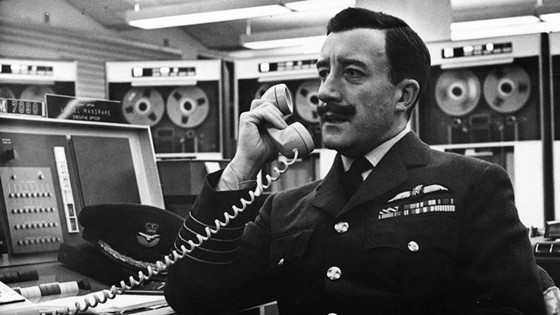
The Cold War was a bizarre time during the 20th century when the two major superpowers in the world maintained a round-the-clock preparedness to destroy one another with nuclear weapons; this sobering reality gave both states complete control over their citizens. Kubrick dangerously mocked the whole political and military establishment with this film.
During the release of the film, the vast majority of Americans blindly followed the Cold War propaganda the government fed to them and Kubrick brilliantly exposed the misinformation by showing that idiots were running the show.
From the president of the United States to a major in charge of a nuclear B-52 bomber, Kubrick portrays those in charge as incompetent fools who lack the intellectual capabilities to prevent a nuclear catastrophe from taking place, The Cold War gave Kubrick the perfect political environment to challenge the status quo because there were very few voices of dissent.
Criticizing the government during the Cold War was considered unpatriotic, even treasonous, but in using dark humor, Kubrick was able to mock the military establishment. However, it was the film’s realism that allowed him to get away with it.
“Dr. Strangelove” also spoke truth to power in a way that few artists would dare speak. This movie would set Kubrick apart from other contemporary filmmakers because the film was so subversive at the time of its release. The movie is less of an anti-war film and more of an anti-establishment indictment of the concept of a perpetual military state.
2. Dangerous people in positions of power
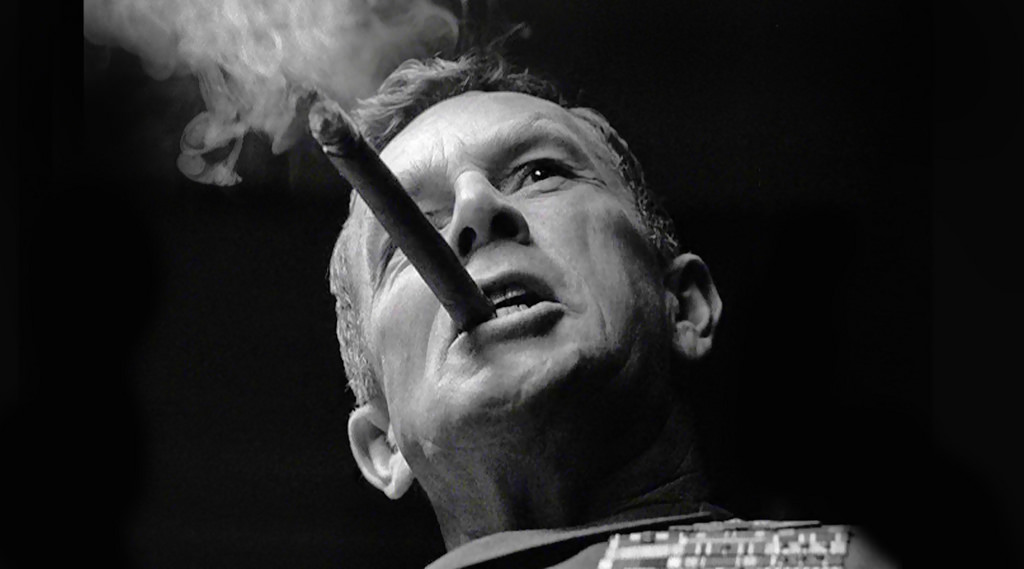
When General Jack D. Ripper gives the orders to launch a first strike at Russia, the film shows that no system is foolproof if you have a maniac in a position of power. Kubrick deliberately named the homicidal general after the infamous London serial killer, and the general explained why he choose to set off World War 3 during a conversation with Captain Lionel Mandrake, one of the three characters played by Peter Seller.
General Jack D. Ripper: “Mandrake, do you recall what Clemenceau once said about war?”
Group Capt. Lionel Mandrake: “No, I don’t think I do, sir, no.”
General Jack D. Ripper: “He said war was too important to be left to the generals. When he said that, 50 years ago, he might have been right. But today, war is too important to be left to politicians. They have neither the time, the training, nor the inclination for strategic thought. I can no longer sit back and allow Communist infiltration, Communist indoctrination, Communist subversion and the international Communist conspiracy to sap and impurify all of our precious bodily fluids.”
Many high-ranking military officials and politicians dismissed the possibility of a rogue general setting off a nuclear war as it was portrayed in the film; however. “Dr. Strangelove” proved to be more accurate than anyone could possibly imagine.
President Dwight D. Eisenhower established a protocol in the 1950s to allow military officers to launch nuclear weapons on their own in case of an emergency, or if the President couldn’t be reached or was incapacitated. From the 50s all the way to the early 1970s, there were many officers within the military chain of command that had the same authority to launch a nuclear missile as the president.
The movie “Dr. Strangelove” and “Red Alert”, the book it was based on, sparked serious debate within the Pentagon, and by the early 70s, locking devices were installed on all nuclear weapons that utilized coded switches to prevent unauthorized launches. High ranking generals at the Pentagon did not want life imitating art.
3. Following orders
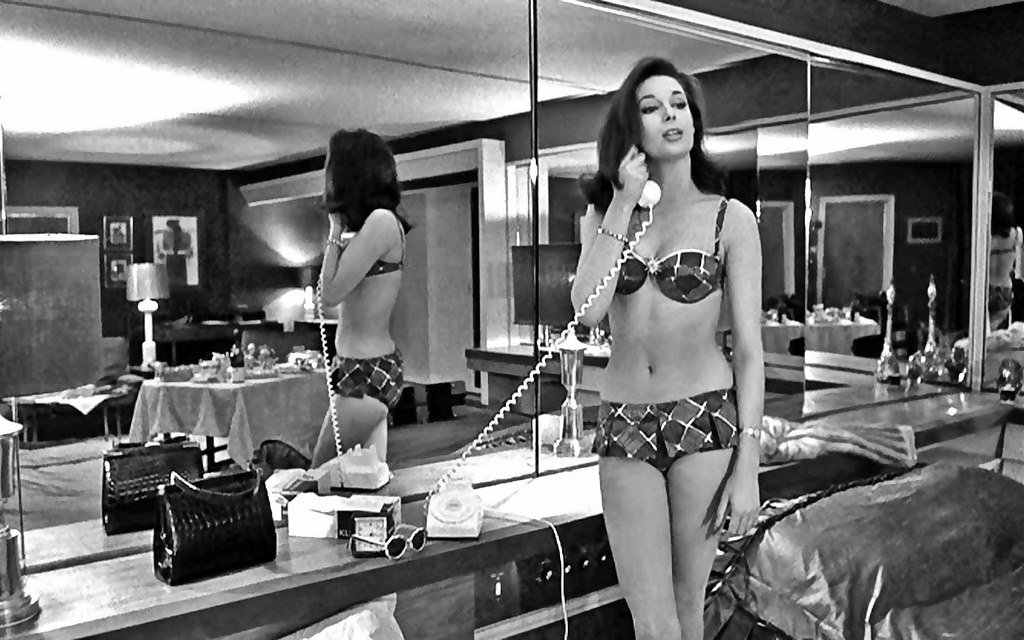
When Air Force Major King Kong receives the order for first strike, the major and his crew pilot their B-52 bomber to Russia to drop the nuclear bomb.
The film shows that next to having a maniac in charge, the second most dangerous thing is people who will follow orders without question. Throughout history, many tyrants have committed great atrocities but it’s the forgotten soldiers or accomplices that follow the hideous orders that are the real danger to society.
Kubrick highlights the stupidity of blindly following orders when a person has the ability to start World War 3. Major Kong does not pause or second guess his orders; he follows them without question. Even when the damaged bomb bay doors won’t open, Major Kong climbs down into the bomb bay, repairs the damage, and the nuclear missile falls from the Bomber.
Major Kong rides the missile down to its detonation, waving his cowboy hat, happy to be following orders and playing his part in the destruction of mankind. Kubrick presents here a cautionary warning to fear the simple-minded idiot that will follow orders more than the monster that gives them.
4. Dr. Strangelove
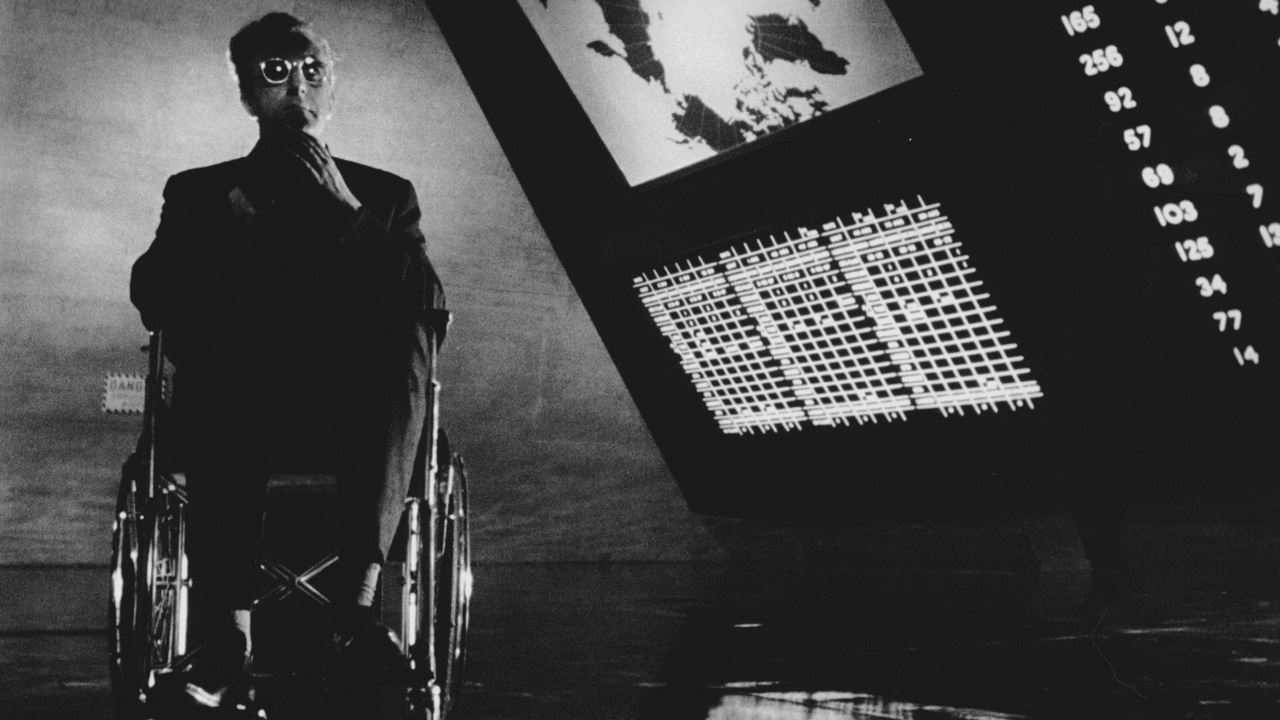
At the end of World War 2, the United States and Russia were both rounding up Nazi scientists and intelligence officials; both countries desperately wanted knowledge of Germany’s scientific developments and intelligence information and assets.
The CIA recruited many former Nazis to work at the spy agency, and former Nazi scientists helped NASA develop rocket technology that took us to space. But over time, many people in government who were aware of the Nazi recruitment began to wonder just how much influence these former Nazis had when it to came to shaping American policy, and some even suggested the recruitment may have morphed into a Nazi infiltration.
It was daring for Kubrick to put a character like Dr. Strangelove, played by Peter Sellers, into his movie, because only a select few in the government knew about the Nazi recruitment and if the American public had full disclosure of it, the political fallout could be enormous.
While Kubrick played the character for laughs, Dr. Strangelove’s uncontrollable arm throws the Nazi salute at inappropriate times and at the end of the film he delivers a funny and disturbing line of dialogue when he rises from his wheelchair and proclaims: “Mein Führer! I can walk!”
Kubrick was hiding an ugly reality behind the absurdity of the character and performance, but he was telling the world that not only were former Nazis helping to shape American foreign and domestic policy, but they were also leading us down a path to war and the possible destruction of American values.
5. Peter Sellers
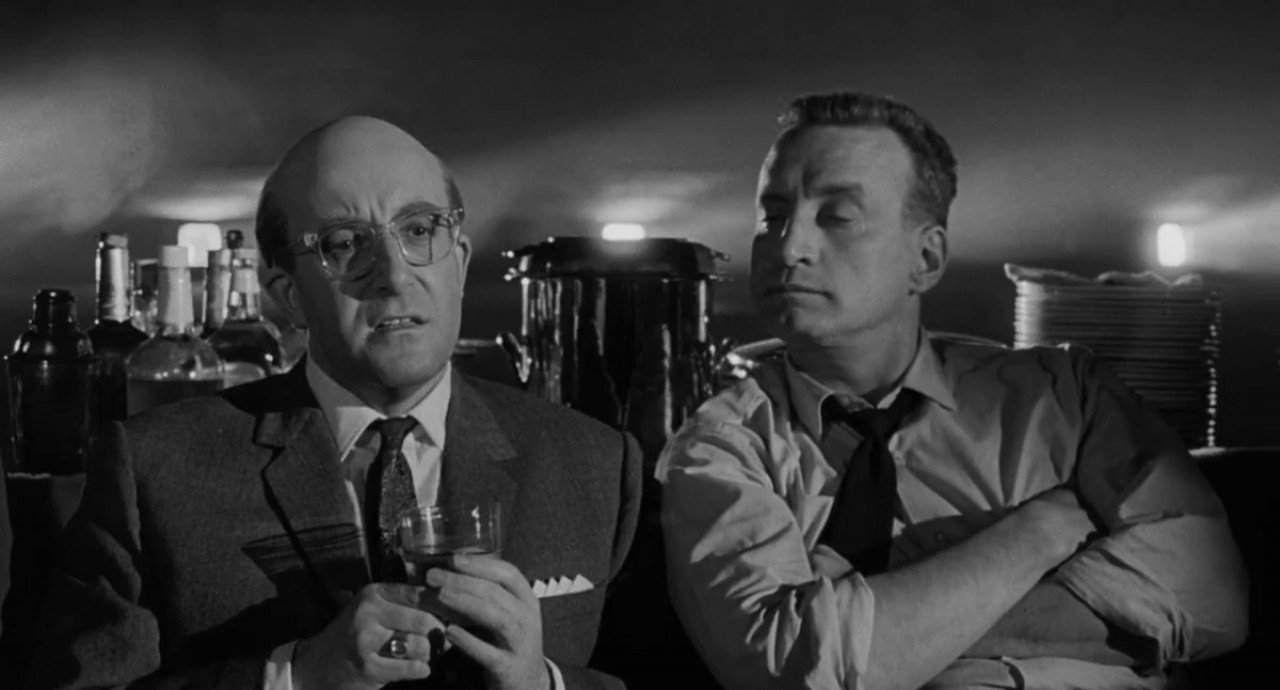
Playing three roles in the film, his performance is one of the reasons “Dr. Strangelove” is a cinematic classic. Sellers’ performance is so good that when watching the film, you can easily forget that three different characters are all played by one actor.
The first character we’re introduced to is Captain Lionel Mandrake, a British RAF officer working in America in an exchange program. He’s the first to discover General Jack D. Ripper’s plan to start World War 3 and does everything in his power to stop him. Sellers brings humor to this role by acting calm and rational while madness and insanity is happening all around him. The actor stays true to the character’s British nationality by following the famous motto: keep calm and carry on.
Sellers’ next role was President Merkin Muffley, the commander in chief of the United States, but he’s a weak leader and a man not up to the task of preventing World War 3. And the last and most iconic character is Dr. Strangelove; Sellers gives an over-the-top performance that is still funny and captivating to watch more than 50 years later. Sellers almost played four roles in the film; originally the character of Major King Kong was to be played by Sellers, but the actor sprained his ankle and couldn’t perform in the cramped B-52 bomber set.
6. Stanley Kubrick
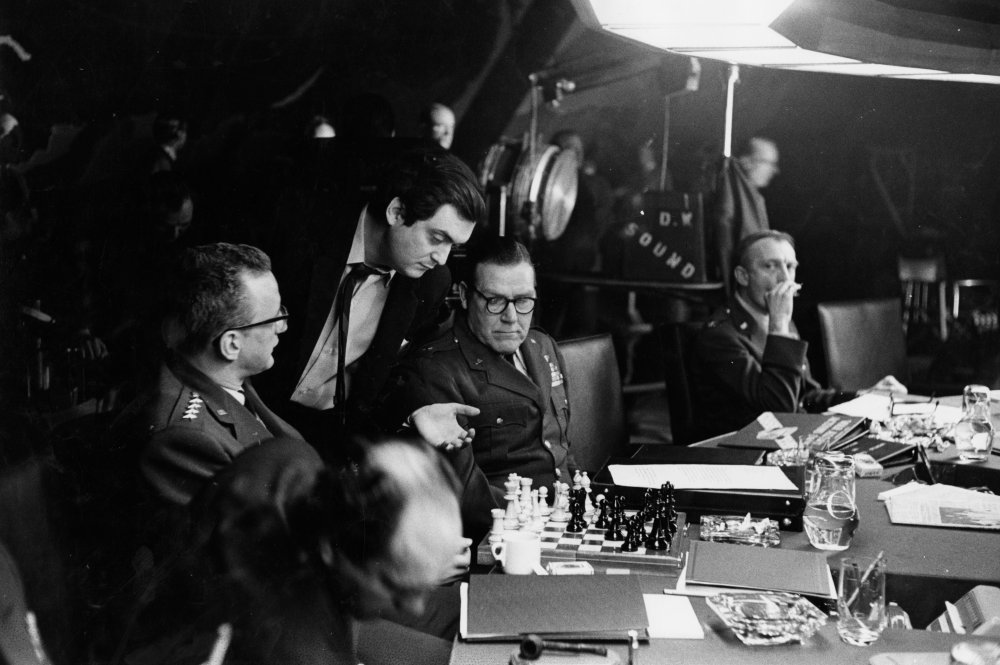
“Dr. Strangelove” was the first movie that separated him from other directors in Hollywood. He directed three great films in a row – “Dr. Strangelove”, “2001: A Space Odyssey”, and “A Clockwork Orange” – and he is considered by many to be the greatest filmmaker to ever live.
While playing the character of Dr. Strangelove, Sellers wears a black leather glove that he got from Kubrick. The reason Kubrick was wearing black leather gloves on the set was so he wouldn’t burn his hands while readjusting and moving around lights on the set. There aren’t too many directors that would pay so much attention to details that they would help with the lighting of the film. There were always cinematographers on Kubrick’s sets but the director usually came up with the lighting design and often operated the camera himself.
Famed cinematographer Gilbert Taylor was the director of photography on “Dr. Strangelove” and would go on to photograph such films as “Star Wars” and “The Omen”, but it was Kubrick who insisted on using the overhead lights built into the set to light the entire war room scene, and this decision created one of the most visually arresting scenes in the movie.
7. We’ll meet again
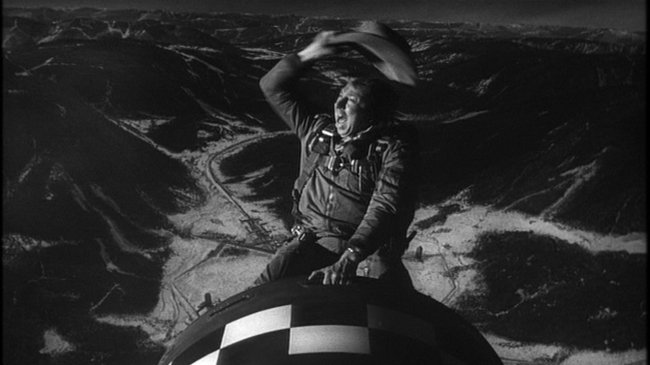
At the end of the film, mutual destruction occurs and Vera Lynn’s song “We’ll Meet Again” plays as a montage of nuclear explosions occur. And if the song is a metaphor suggesting civilization will return, it’s no doubt that man will find a way to destroy the world once again.
The song is also relevant to our current political climate because once again we’re heading toward a new Cold War with Russia. As well, in the 21st century, tensions with North Korea are at an all-time high. With questionable leadership in countries possessing nuclear weapons, you can’t help but worry that the dire situation Kubrick satirized 50 years ago might become reality in our modern era.